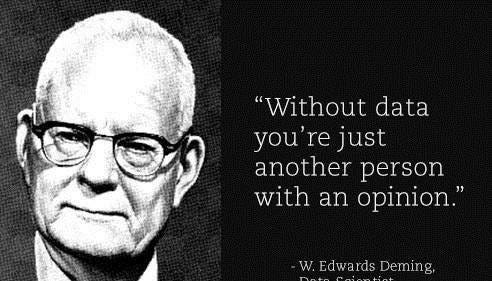The good, the bad and the ugly
Comms lessons from TfL smack from UKSA, data storytelling inspiration from Swift, and influencing Westminster with data journalism techniques.
TfL ‘stats smack’ highlights need for data literacy in comms
I come across a fair few fellow communications professionals who admit to a certain discomfort when it comes to working with numbers rather than words.
But in an increasingly data-driven world, this professional position is increasingly perilous.
As Ultra Low Emission Zones (ULEZ) continue to be booted around the national news and political arena, Transport for London (TfL)’s comms team unwittingly ‘became the story’ after being rapped by the UK Statistics Authority (UKSA) for a lack of data transparency underpinning its public statements.
Writing following a complaint made by Munira Wilson MP (Lib Dem) about Sadiq Khan’s claims that 9 in 10 cars seen driving in outer London meet ULEZ standards, UKSA Chairman Sir Robert Chote highlighted there had been “several examples raised with us in which TfL has made statements or issued press releases based on unpublished TfL data or where data quoted are not provided with sufficient context”.
TfL voluntarily applies the Code of Practice for Statistics, committing it to producing analytical outputs that are of high quality and useful for supporting decisions.
With Chote directly name checking the communications team and the Director of Communications and Corporate Affairs in his public response to Ms Wilson, it highlights the need for a good working knowledge of data codes and policies, and more of a ‘data mindset’ within teams.
While responsibility for data policy doesn’t lie directly with the comms team, some data nous and good old critical thinking - one of the less sexy ‘old skills’ as Man Met marketing academic/guru Dave Edmundson-Bird put it last week - in handling this story may have seen a different or better outcome.
Lack of comfort and literacy with data in comms not only leads to missed opportunities for telling great stories; TfL’s ticking off by Sir Robert was seized upon by national media, putting some dints in corporate reputation and saw the comms team become (uncomfortably) part of the story.
New data challenges common reputational assumptions about LTNs
I’ve been working on some projects recently where I have collected assumptions from comms teams and then used data to test and challenge these.
So I was interested to hear of new data that shows that despite what might be widely assumed, supporting Low Traffic Neighbourhoods does not lead to London councilors losing seats
New analysis by the Active Travel Academy at Westminster University has found that London councillors representing areas with Low Traffic Neighbourhoods (LTNs) who tweeted about LTNs were no more or less likely to hold their seat in the 2022 local elections than those who did not tweet about them.
Interesting, given the current utterances from the Prime Minister and some of his fellow MPs, a 2021 Low Traffic Neighbourhoods Residents Survey for Department of Transport by Kantar found 61 per cent of respondents would support LTNs in their local area with only 29 per cent opposed to LTNs.
Data comms agency scores success in Westminster
Be The Best Communications scored some notable influence in Westminster in July thanks to a firmly data-driven approach - and one refreshingly different to commissioning an expensive and fairly limited survey.
Drawing on data journalism techniques and utilising public datasets, its research was cited in the UK Transport Committee’s inquiry report as evidence of why Bradford desperately needs a new railway station and better rail connections.
By analysing more than 3,000 railway journeys between Britain’s 20 largest cities, Be The Best was able to provide compelling evidence which quantifies how Bradford is the worst connected major city in Britain.
As founder Chris Walker puts it; “Without data or evidence to back up your claims what you’re saying is just an opinion”.
Be The Best describes itself as “the UK’s data-fuelled PR, public affairs and digital communications agency for places, businesses and organisations”.
For comms professionals (and also agency owners) looking for inspiration and ideas about how data can be integrated into strategic comms, its MD Chris Walker is well worth a follow on LInkedIn.
Swift ‘seismic’ data story highlights opportunities
Catching our eye this week was a wonderfully simple but powerful and opportunistic data-driven story that made international headlines.
CNN - followed by global media - reported last week that Taylor Swift’s Eras tour performances in Seattle on 22 and 23 July generated an earthquake of a 2.3 magnitude. Jackie Caplan-Auerbach, a US geology professor, got the idea from an earthquake Facebook group she moderates, and proceeded to pull and visualise the relevant data and share it on social media.
By bringing together two related datasets - soft data on Taylor’s performances (attendance and timings) and the hard seismic activity data - Caplan-Auberbach gives communicators some neat inspiration for ways we could be deploying data opportunistically and successfully in our campaigns.
Data Communications Chronicles is written by Alex Waddington, founder of Whetstone Communications, which provides expert consultancy on using data to sharpen strategic communications. To get in touch, email alex@whetstonecomms.com.

